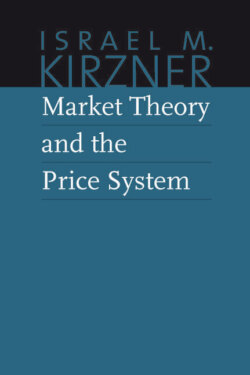Читать книгу Market Theory and the Price System - Israel M. Kirzner - Страница 49
На сайте Литреса книга снята с продажи.
The Ordinal Character of Utility
ОглавлениеTwo conflicting approaches to utility theory are met in the literature. The older (but by no means extinct) approach was to treat the utility of a good for an individual as a magnitude to which, in principle, a cardinal number could be assigned. An apple has, let us say, 10 units of utility; a shirt, 50 units; and so on. Such an approach involves the postulation of a numerical scale of utility against which the utilities of goods might—again only in principle—be measured with precision.2 The theoretical concept of numerical quantities of utility involves, again, the notion that a larger “quantity of utility” (one, that is, comprising a larger number of “units” of utility) is built up through the addition of smaller quantities of utility or of units of utility. A good with utility of 10 possesses 10 times the utility of a good with unit utility; and so on. The cardinal utility approach would consider a man enlarging his stock of a good as, at the same time, increasing his store of utility afforded by possession of the good. The total store of utility afforded by the entire stock would be the sum of the successive increments of utility obtained as the stock successively expanded from the acquisition of the first unit up to the addition of the last acquired unit. The rate at which the addition of successive physical units of the good increases the total utility of a stock of the good is termed (in the cardinal terminology) the “marginal utility” of the good.3
The ideas, however, underlying the cardinal approach present considerable conceptual difficulty. Without attempting to enlarge on this difficulty, we can contrast this approach with the currently more accepted ordinal approach. This view denies the very notion of cardinal quantities of utility. The only numbers that can be assigned to utilities are ordinal numbers. Utilities can be arranged in order; for example, first, second, and so on. They cannot however be assigned numerical magnitude. A shirt may be said to have greater utility than an apple; one may not say how many times the utility of the shirt is greater. A “unit” of utility has no meaning for the ordinal approach. When men value goods, they arrange them in order of value; they do not attach cardinal numbers to them.
The discussion we have presented in this chapter follows the ordinal approach to utility. For us, the utility of a good corresponds to a ranking on the scale of values; to speak of the utility of a good is to involve only the comparison of its significance with that of some other good. An important consequence of our adopting this ordinal viewpoint is that the term “marginal utility” is used in this book in a somewhat different sense from its use in a “cardinal” approach. This matter of terminology needs a brief explanation.
